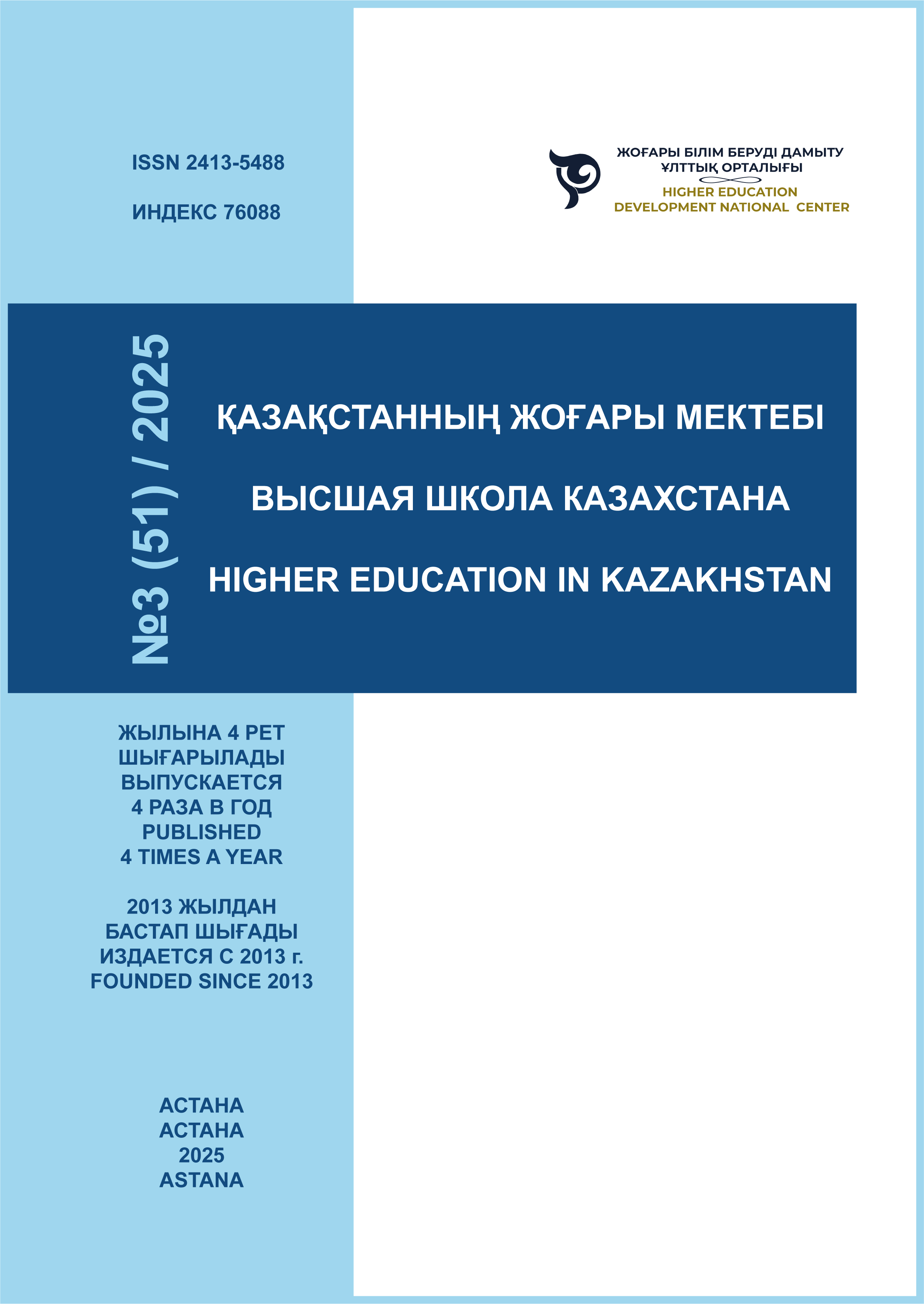FORMATION OF MULTI-UNIVERSITY SCIENTIFIC AND EDUCATIONAL COMMUNITIES BASED ON SCIENTOMETRIC ANALYSIS
DOI:
https://doi.org/10.59787/2413-5488-2025-51-3-107-119Ключевые слова:
multi-university scientific communities, scientometric analysis, network clustering, scientific collaboration network, citation network, international collaborationАннотация
The article examines the problem of forming multi-university scientific and educational communities based on scientometric and network analysis methods. A formal model for identifying inter-university collaborations is proposed, which is based on constructing a metric space of scientific publications and further clustering using the Louvain algorithm. The model makes it possible to represent universities and researchers as nodes of a collaboration network, where the edge weights are determined by the number of co-authored publications. The developed approach was applied to data from the open OpenAlex database for the analysis of universities in Kazakhstan. The obtained results revealed the existence of a core of leading institutions (Al-Farabi Kazakh National University, Nazarbayev University, L. N. Gumilyov Eurasian National University, and Astana IT University) that demonstrate the highest intensity of collaboration, while other universities remain at the periphery of the research network. It was also established that national collaborations in Kazakhstan are significantly stronger than international ones, which highlights the need for further internationalization and integration into global scientific networks. The results obtained have both theoretical significance for the development of scientometrics and practical value for shaping science policy and designing strategies to improve the effectiveness of academic collaboration.
Библиографические ссылки
Kosztyán, Z. T., Fehérvölgyi, B., Csizmadia, T., & Kerekes, K. (2021). Investigating collaborative and mobility networks: Reflections on the core missions of universities. Scientometrics, 126, 3551–3564. https://doi.org/10.1007/s11192-021-03865-7
Zhang, L., Gong, J., Yang, Y., & Li, J. (2025). Cities in global and sustainable scientific collaboration network: Unveiling cooperation centers. Humanities and Social Sciences Communications, 12, 1406. https://doi.org/10.1057/s41599-025-05667-1
Narbaev, T., Amirbekova, D., & Bakdaulet, A. (2025). A decade of transformation in higher education and science in Kazakhstan: A literature and scientometric review of national projects and research trends. Publications, 13(3), 35. https://doi.org/10.3390/publications13030035
Amirbekova, D., Narbaev, T., & Kussaiyn, M. (2022). The research environment in a developing economy: Reforms, patterns, and challenges in Kazakhstan. Publications, 10(4), 37. https://doi.org/10.3390/publications10040037
Hladchenko, M., & Moed, H. F. (2021). The effect of publication traditions and requirements in research assessment and funding policies upon the use of national journals in 28 post-socialist countries. Journal of Informetrics, 15(4), 101190. https://doi.org/10.1016/j.joi.2021.101190
Kuzhabekova, A., Ispambetova, B., Baigazina, A., & Sparks, J. (2022). A critical perspective on short-term international mobility of faculty: An experience from Kazakhstan. Journal of Studies in International Education, 26(4), 454–471. https://doi.org/10.1177/10283153211023613
Nurtayeva, D., Kredina, A., Kireyeva, A., Satybaldin, A., & Ainakul, N. (2024). The role of digital technologies in higher education institutions: The case of Kazakhstan. Problems and Perspectives in Management, 22(1), 562–577. https://doi.org/10.21511/ppm.22(1).2024.44
National Academy of Sciences of Kazakhstan. (2023). National report on science. Government of Kazakhstan. https://www.gov.kz/uploads/2023/11/17/7ce8a403d55b7f2b1cb4ab194337832f_original.5055287.pdf
Kuzhabekova, A., & Ruby, A. (2018). Raising research productivity in a post-Soviet higher education system: A case from Central Asia. European Education, 50(3), 266–282. https://doi.org/10.1080/10564934.2017.1348445
Biloshchytskyi, A., Makhatayev, A., Kuchanskyi, A., Omirbayev, S., Andrachko, Y., & Biloshchytska, S. (2025). Method for assessing quality assurance in higher education institutions. TEM Journal. 14 (1), 372-386. https://doi.org/10.18421/TEM141-33
Lin, Y., Frey, C. B., & Wu, L. (2023). Remote collaboration fuses fewer breakthrough ideas. Nature, 623(7989), 987–991. https://doi.org/10.1038/s41586-023-06767-1
Biloshchytskyi, A., Omirbayev, S., Mukhatayev, A., Kuchanskyi, O., Hlebena, M., Andrashko, Y., Mussabayev, N., & Faizullin, A. (2024). Structural models of forming an integrated information and educational system “quality management of higher and postgraduate education”. Front. Educ. 9:1291831. doi: 10.3389/feduc.2024.1291831
Blondel, V. D., Guillaume, J. L., Lambiotte, R., & Lefebvre, E. (2008). Fast unfolding of communities in large networks. Journal of Statistical Mechanics: Theory and Experiment, 2008(10), P10008. https://doi.org/10.1088/1742-5468/2008/10/P10008
Gephi. The open graph visualization platform. https://gephi.org/
OpenAlex. The open catalog of the global research system. https://openalex.org/

Загрузки
Опубликован
Выпуск
Раздел
Лицензия
Copyright (c) 2025 Научно-аналитический журнал "Высшая школа Казахстана"

Это произведение доступно по лицензии Creative Commons «Attribution-NonCommercial» («Атрибуция — Некоммерческое использование») 4.0 Всемирная.













